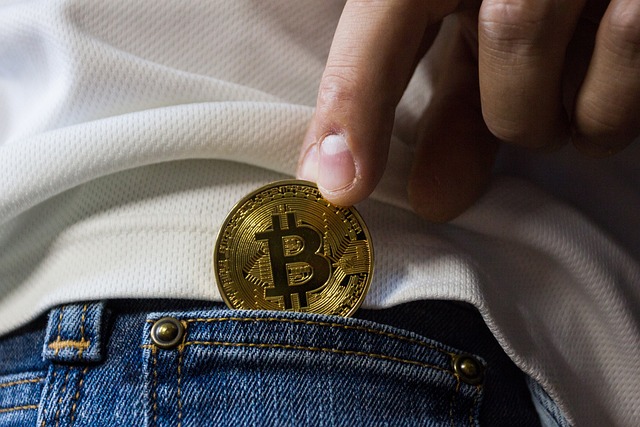Cryptocurrency exchanges prioritize robust crypto wallet backup & recovery systems to safeguard user data and digital assets. They use encryption and offline storage methods like hardware or paper wallets for private keys. Recovery processes involve multi-signature requirements and time-locked restoration to prevent unauthorized access, ensuring users can retrieve their funds even if the primary exchange is compromised. Regular backups and secure offline locations are crucial for protecting funds from device failure or malicious attacks. Exchanges should also implement multi-factor authentication, encryption technologies, regular security audits, software updates, and firewall protections, while educating users about common scams to enhance security awareness.
In the world of digital currencies, ensuring the security of your crypto exchange is paramount. This article explores essential measures to safeguard your digital assets. From understanding basic security concepts to implementing robust backup and recovery strategies, we delve into best practices for both users and exchanges. Learn how crypto wallets play a pivotal role in securing your holdings and discover practical tips to enhance wallet safety and facilitate efficient recovery processes.
- Understanding Cryptocurrency Exchange Security: The Basics
- The Role of Crypto Wallets in Securing Your Digital Assets
- Backup and Recovery Strategies for Cryptocurrency Wallets
- Implementing Robust Security Measures on Crypto Exchanges
- Best Practices for Users to Enhance Wallet Safety and Recovery
Understanding Cryptocurrency Exchange Security: The Basics

Cryptocurrency exchanges store vast amounts of sensitive user data and digital assets, making them attractive targets for cybercriminals. To protect this valuable information, exchanges implement robust security measures that extend beyond traditional banking practices. At the core of these defenses lies a strong focus on crypto wallet backup and recovery systems. These mechanisms ensure users can access their funds even if their primary exchange is compromised or closed down.
Effective wallet backup involves encrypting and securely storing private keys offline, often through dedicated hardware wallets or paper wallets. Recovery methods typically include multiple signature requirements (using more than one private key) and time-locked restoration processes to prevent unauthorized access. By combining these strategies, cryptocurrency exchanges aim to safeguard user funds while maintaining the integrity of their platform.
The Role of Crypto Wallets in Securing Your Digital Assets

Crypto wallets play a pivotal role in securing your digital assets. They act as secure digital vaults, storing your private keys and enabling access to your cryptocurrencies. Choosing the right type of wallet is crucial for ensuring the safety of your funds. A hot crypto wallet, for instance, stores your keys online, making it convenient but potentially less secure due to potential hacking risks. In contrast, a cold wallet keeps your keys offline, enhancing security but requiring additional steps for access.
Regular backup and recovery procedures are essential practices for any crypto wallet owner. Backups safeguard your funds against loss or theft due to device failure or malicious attacks. Recovery mechanisms ensure that you can access your assets even if your primary wallet is compromised. It’s recommended to store backups in secure, offline locations and keep them updated alongside your main wallet. By implementing these security measures, users can better protect their digital assets in the ever-evolving crypto landscape.
Backup and Recovery Strategies for Cryptocurrency Wallets

Maintaining security in cryptocurrency wallets extends beyond robust encryption. Effective crypto wallet backup & recovery strategies are essential to safeguard digital assets against loss or theft.
Implementing redundant backup solutions is paramount. This might include storing encrypted copies on secure external hard drives, utilizing cloud-based services with strong authentication measures, or employing hardware wallets that offer built-in recovery features. Regularly updating these backups ensures accessibility even if original devices are compromised. Additionally, understanding and practicing effective recovery procedures, such as using recovery phrases or private keys stored in a safe location, plays a pivotal role in mitigating potential losses.
Implementing Robust Security Measures on Crypto Exchanges

Crypto exchanges, given their value and accessibility, are prime targets for cybercriminals. Therefore, implementing robust security measures is non-negotiable. One critical aspect is enabling secure access to crypto wallets through robust backup and recovery mechanisms. These ensure that users can quickly restore their funds in the event of device loss or failure. Beyond individual wallet protection, exchanges should invest in multi-factor authentication (MFA), encryption technologies, and regular security audits.
Moreover, keeping software up-to-date and implementing robust firewall protections are essential. Exchanges must also foster a culture of security awareness among users, educating them about common scams and phishing attempts. By combining these measures, crypto exchanges can significantly reduce the risk of security breaches, thereby fostering public confidence in digital currencies.
Best Practices for Users to Enhance Wallet Safety and Recovery

To enhance wallet safety and facilitate crypto wallet backup & recovery, users should adopt best practices. One crucial step is to enable two-factor authentication (2FA) for an extra layer of protection. Users should also regularly update their software to patch any security vulnerabilities. Creating a secure backup is essential; store your recovery phrases in a safe, physical location away from digital devices. It’s recommended to keep multiple backups in different secure spots. Additionally, consider using hardware wallets for long-term storage, as they provide robust protection against cyber threats.
Regularly reviewing and updating your security measures is vital. Keep your recovery phrases and access keys confidential; never share them with anyone, not even those claiming to be from your exchange or service provider. Enable the auto-lock feature on your devices after a short period of inactivity to deter unauthorized access. By following these best practices, users can significantly improve their crypto wallet security and ensure faster, smoother recovery in case of loss or theft.
Securing your cryptocurrency assets involves a multi-layered approach. By understanding the basics of exchange security and adopting best practices for wallet backup and recovery, users can mitigate risks and protect their digital wealth. Remember that regular backups, secure storage, and enabling two-factor authentication are key steps to ensure peace of mind in this evolving landscape.
